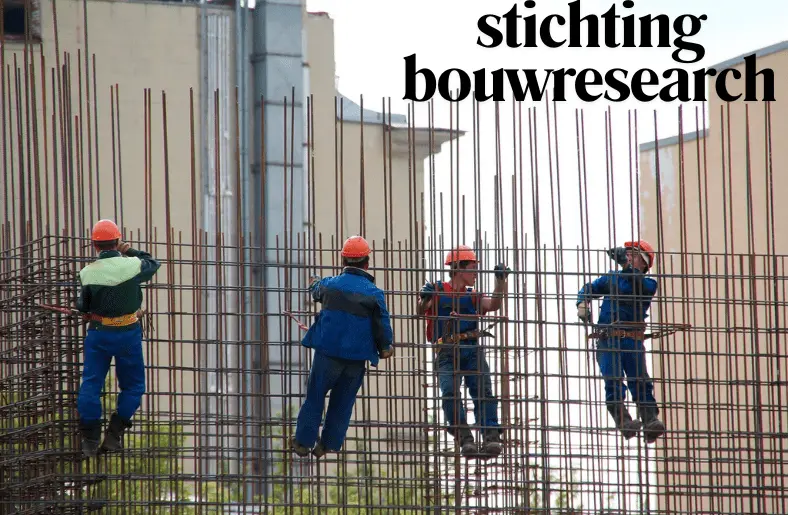Stichting Bouwresearch, also known as the Foundation for Construction Research, is a cornerstone in the Dutch construction industry. Since its establishment in 1952, it has been at the forefront of construction innovation. The foundation focuses on advancing building technologies, optimizing construction processes, and ensuring safety and compliance in the industry. By continually researching new materials and methods, Stichting Bouwresearch plays a crucial role in driving the sector forward. Sustainable building practices are essential in today’s construction industry. These practices help reduce environmental impact, save resources, and create healthier living spaces. Moreover, they contribute to long-term cost savings and energy efficiency. As climate change becomes a pressing concern, the need for eco-friendly construction solutions grows. Stichting Bouwresearch is a leader in promoting these sustainable methods, setting standards that prioritize the environment and future generations. By adopting green building techniques, the industry can ensure a balance between development and environmental stewardship.
History and Establishment about Stichting Bouwresearch
Stichting Bouwresearch, established in 1952, emerged from a post-war need for building innovation. Initially, the construction industry faced numerous challenges, including a lack of advanced materials and techniques. Therefore, industry leaders joined forces to create a platform dedicated to research and development. The foundation’s early years focused on addressing knowledge gaps in construction materials. Researchers conducted extensive studies on reinforced and prestressed concrete, which were crucial for rebuilding efforts. Thus, Stichting Bouwresearch began its journey toward revolutionizing construction practices.
Over the decades, the foundation expanded its scope. It started collaborating with academic institutions, government agencies, and industry stakeholders. These partnerships facilitated knowledge exchange and technological advancements in the construction sector. In 2003, under engineer Jack de Leeuw’s leadership, the foundation rebranded as SBR. This rebranding marked a significant shift towards a more modern and innovative approach to construction research. Subsequently, SBR merged with CURnet in 2013, forming SBRCURnet, further strengthening its industry role. Located at Delft University of Technology’s De Bouwcampus, SBRCURnet continued to drive progress. However, funding challenges led to its dissolution in 2017. Despite this, its legacy endures, with activities and research continuing under new organizations like ISSO and CROW.
Research and Innovation
Stichting Bouwresearch stands at the forefront of construction research and innovation. Initially, its mission focused on understanding and improving building materials. Over time, this mission evolved to address broader challenges in the construction industry. Firstly, the foundation conducts extensive research on sustainable building materials. This includes exploring recycled and eco-friendly materials to reduce environmental impact. Consequently, these innovations help in creating greener, more sustainable buildings.
Additionally, Stichting Bouwresearch has pioneered the use of advanced construction technologies. For example, Building Information Modeling (BIM) has revolutionized project planning and execution. Through BIM, project stakeholders can collaborate more effectively, reducing errors and costs. Moreover, the foundation promotes the integration of renewable energy systems in buildings. Solar panels, wind turbines, and geothermal systems are some examples. These technologies not only reduce reliance on fossil fuels but also lower greenhouse gas emissions.
Another area of innovation is smart building solutions. By incorporating IoT devices and sensors, buildings become more efficient and responsive. For instance, smart HVAC systems adjust automatically to optimize energy use and maintain comfort. Furthermore, Stichting Bouwresearch emphasizes the importance of digital construction tools. Drones, virtual reality, and construction management software streamline project workflows. As a result, projects are completed faster, with fewer mistakes and lower costs. In terms of safety and compliance, the foundation sets high standards. Their research ensures that construction practices meet strict safety regulations. This helps in creating buildings that are safe, durable, and resilient.
Collaborations and Partnerships
Stichting Bouwresearch thrives on strong collaborations and partnerships. These relationships are crucial for advancing construction research and innovation. By working with diverse stakeholders, the foundation leverages collective expertise and resources. Firstly, Stichting Bouwresearch partners with academic institutions. These collaborations foster research and development in construction technologies. Universities provide a wealth of knowledge and research facilities. In return, the foundation offers real-world applications for academic theories.
Additionally, the foundation collaborates with industry professionals. Construction companies, architects, and engineers contribute practical insights. This ensures that research outcomes are relevant and applicable to the industry. As a result, innovations are swiftly adopted in real-world projects. Moreover, government agencies play a vital role. They provide funding and policy support for sustainable construction initiatives. By aligning with governmental goals, Stichting Bouwresearch influences policy-making. This collaboration ensures that construction practices comply with regulatory standards. International partnerships are equally important. The foundation engages with global research organizations to exchange knowledge and best practices. This global perspective helps in adopting innovative solutions from around the world. Consequently, the foundation remains at the cutting edge of construction research.
Furthermore, Stichting Bouwresearch works with non-profit organizations. These partnerships focus on community-oriented projects and social sustainability. Together, they address housing issues and promote affordable, eco-friendly living spaces. This collaboration ensures that innovations benefit society as a whole. In addition, the foundation forms alliances with technology companies. These partnerships drive the integration of digital tools in construction. For example, collaborations with software firms enhance the use of BIM and other digital construction tools. This results in more efficient project management and execution. Lastly, long-term relationships are a cornerstone of Stichting Bouwresearch’s strategy. Trust, transparency, and shared values underpin these partnerships. Long-term collaborations lead to deeper mutual understanding and sustained progress.
Future Horizons and Vision In Stichting Bouwresearch
Stichting Bouwresearch envisions a future where sustainable construction is the norm. Their commitment to innovation drives this vision. They aim to lead the industry towards eco-friendly building practices. Firstly, the foundation focuses on integrating advanced technologies. Smart building solutions and renewable energy systems are key areas. These technologies reduce environmental impact and enhance efficiency. Moreover, Stichting Bouwresearch emphasizes the importance of digital tools. Building Information Modeling (BIM) and other digital workflows streamline construction processes. This results in reduced errors and improved project outcomes.
Additionally, they are committed to developing sustainable materials. Eco-friendly and durable materials are crucial for future construction. By promoting these, the foundation ensures buildings are both resilient and environmentally friendly. Furthermore, the foundation aims to foster greater industry collaboration. Partnerships with global research institutions and industry leaders are essential. These collaborations will drive innovation and knowledge exchange.
The foundation also envisions addressing climate change challenges. They are developing strategies to make buildings more resilient to environmental changes. This includes improving energy efficiency and reducing carbon footprints. Moreover, Stichting Bouwresearch plans to enhance educational initiatives. They aim to educate industry professionals and the public on sustainable practices. Through workshops, seminars, and publications, they will spread knowledge.
Ensuring Safety and Compliance In Stichting Bouwresearch
Stichting Bouwresearch prioritizes safety and compliance in all its initiatives. They establish rigorous standards for building safety. These standards ensure structures are safe and resilient. Firstly, the foundation conducts thorough inspections. They identify potential risks and deficiencies in construction projects. This proactive approach prevents future safety issues. Additionally, they collaborate with industry stakeholders. Builders, developers, and regulators work together to meet safety standards. This collective effort enhances overall building safety.
Moreover, Stichting Bouwresearch provides detailed guidelines. These guidelines help construction professionals adhere to safety regulations. Clear instructions ensure everyone follows the same safety protocols. The foundation also focuses on compliance with legal standards. This ensures all projects meet current legal requirements. Furthermore, they emphasize the importance of continuous education. Training programs for industry professionals keep them informed about safety practices. Ongoing education helps maintain high safety standards.
n addition, the foundation advocates for building resilience. They promote construction methods that withstand natural disasters and other hazards. Resilient buildings protect occupants and assets. Moreover, Stichting Bouwresearch supports the development of safer materials. They research and recommend materials that enhance building safety. Using safe materials reduces risks associated with construction. Lastly, they monitor and evaluate compliance regularly. Continuous assessment ensures ongoing adherence to safety standards. This commitment to monitoring helps maintain long-term safety in construction.
Leveraging Building Research in Real Estate
Stichting Bouwresearch plays a crucial role in real estate through building research. This research impacts various aspects of property development.
Firstly, research helps in assessing property value. It provides data on materials, methods, and durability. Buyers and investors use this information for informed decisions. Additionally, research ensures building safety. It identifies potential risks and suggests improvements. Safe buildings attract more buyers and tenants.
Moreover, building research promotes sustainability. It explores eco-friendly materials and energy-efficient designs. Sustainable buildings reduce costs and environmental impact. Furthermore, research supports innovation. It introduces new technologies and construction methods. These innovations enhance building quality and performance. Stichting Bouwresearch also aids in regulatory compliance. Their research aligns with legal standards and policies. This ensures that projects meet all necessary regulations.
In addition, research fosters better planning. It provides insights into urban development trends. Planners use this data to create efficient and attractive communities. Moreover, research enhances construction techniques. It studies advanced methods for faster, cost-effective building. Efficient construction benefits developers and buyers alike. Furthermore, building research improves maintenance strategies. It offers solutions for long-term building care. Proper maintenance extends property lifespan and value. Lastly, research builds trust in the real estate market. Reliable data and proven practices assure stakeholders. Trust leads to stronger market stability and growth.
Conclusion
In summary, Stichting Bouwresearch profoundly impacts the construction industry through dedicated research promoting sustainable building practices. Their historical roots highlight a legacy of continuous innovation. By partnering with various stakeholders, they foster industry-wide improvements, ensuring a shared vision for future progress. Looking ahead, their clear vision aims to further sustainable and innovative construction methods, promising a better-built environment. Additionally, their emphasis on safety and compliance sets high standards, ensuring building safety and regulatory adherence. Their research proves invaluable in real estate, informing decisions and supporting sustainability. Overall, Stichting Bouwresearch’s work benefits society, contributing to a healthier planet.




